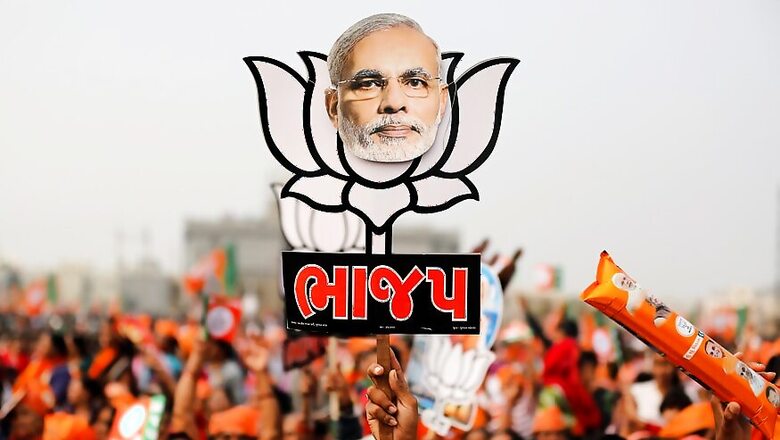
views
Yes, the BJP won and substantially so. However, a closer look would reveal the decline of the BJP support coming from the lower classes and rural Gujarat. The decline in employment, the industrial recession, and the agrarian distress brought the BJP down from the overwhelming support it had.
That the Congress, without a proper cadre was able to catch as much as 41% of the vote share, reflects the huge disenchantment with the economy, and with the oppression let loose on the lower castes. And the economic problems of Gujarat are the creation of the Centre.
So if even in Gujarat — with the PM himself being from the BJP — there has been a significant swing, then the people of India’s hurt due to the economic situation is large. Of this, the agrarian distress is most significant, followed by the decline in manufacturing and investment.
It was hardly the actions of the BJP alone within Gujarat that gave it high growth but the actions of the Centre. Since national growth, and Gujarat’s as well, is driven by demand factors. This is so because the basic supply side liberation of the economy had happened with the economic reforms of the Narashima Rao government, and then that of the Vajpayee government. The two episodes of high growth 1993-1978 and 2003-2012 (with a short interruption in 2008-09) saw high growth in Gujarat as well.
The high growth was kick-started by the Vajpayee government and was continued by the Congress government’s correct response to the global financial crisis, notwithstanding the RBI’s hesitancy in expanding credit in the thick of the crisis.
Gujarat under Narendra Modi immensely benefited from the high growth in these periods. The visibility of the good roads, the 24*7 power (now many states have 24*7 supplies), and the mere fact of the leader being in control and presenting an image as much, enamored the middle classes. Now as Gujarat’s growth has slowed down to a mere 4% or so, the horrific details of the inequity of Gujarat’s growth, its poor record in education and health, and of a governance that is highly centralized stands exposed.
The lower sections of the patidars had been protesting for jobs in the organised sector (read government). They see little hope in an agriculture where despite major gains in productivity, there was little addition to income.
This is a national-level problem spawned in part by the RBI attempting the impossible of trying to address a supply side inflation through aggregate demand measures. This was exacerbated by central government’s fiscal conservatism. Also its inability to actually operationalise support prices to enable the same to bring about a much required terms of trade shift in favour of agriculture needs understanding. China, Korea, Japan and Taiwan all show this. This problem can hardly be addressed at the state level. Punjab’s early crisis in agriculture since 2007, and now Gujarat and Maharashtra are only the beginnings of a vast agrarian crisis.
The Modi government’s corrections to the GST, the renewed promise to the tribals that they would finally get pattas to land, has helped it to recover the ground among the more well to do and urban patidars and the tribals.
And increased government spending, with the revival of the NREGS as also the enhanced emphasis on the goof old NHDP has the potential to revive the economy in a couple of years, and take it forward if ‘Make in India” can be made workable.
The economic frustration with the BJPs policies at the Centre is evident. The core inability to combine hard micro and meso level reform with macroeconomic consistency is the real problem that comes out through the Gujarat elections.
Sebastian Morris is a professor at Indian Institute of Management, Ahmedabad



















Comments
0 comment